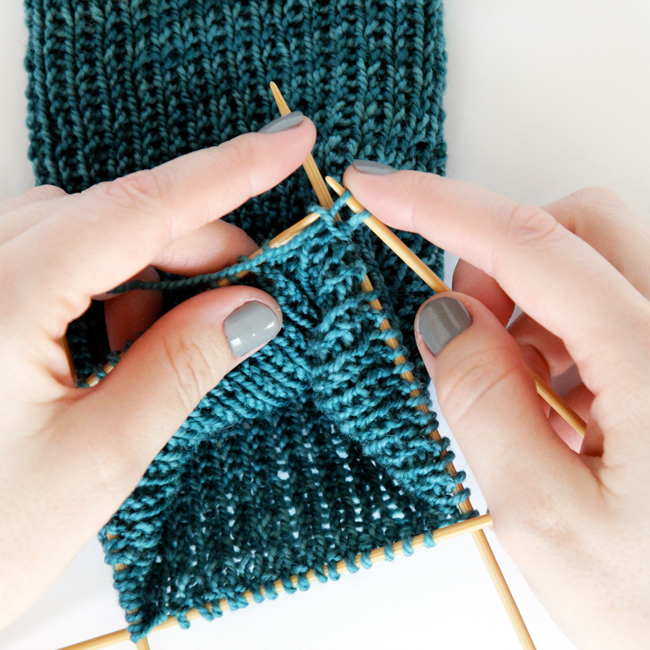
How’s it going, knit-alongers? Hopefully you’ve all survived swatching, casting on, and knitting your ankles last week. If you’re still working on the ankle, no worries! Everyone is welcome to knit at their own pace and ask questions as you work through each phase of your socks. :) Just a reminder that there’s a Hands Occupied Knit Along Ravelry Group, and you can check out other knitters’ progress or share yours on Twitter, Instagram, etc. with #handsoccupiedkal.
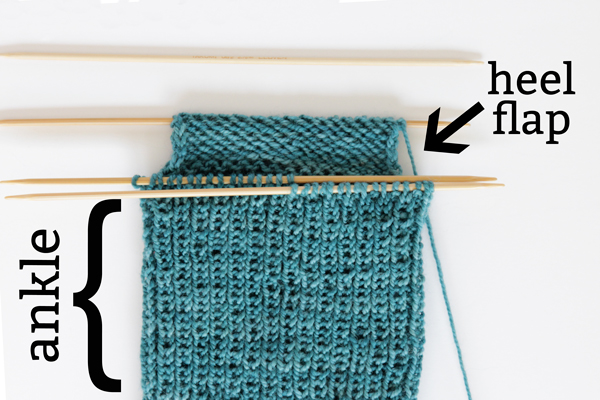
Today we’re going to be adding a heel flap to our socks, which is super duper easy! It’s the one part of knitting a sock done flat instead of in the round. This means you’ll be knitting back and forth for a few inches, turning your work just like you’re making a scarf or blanket.
Working the heel flap
Your ribbed (knitted k1, p1 in the round for 7 or so inches) sock ankle should look something like this:
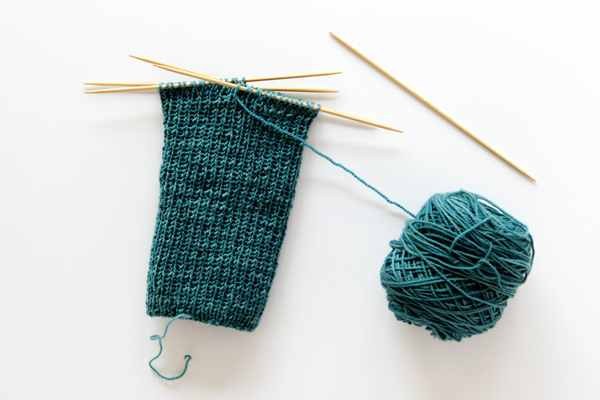
Dividing the stitches
You should make sure your stitches are divided evenly onto 4 needles. If you cast on 64 stitches like me, that means there needs to be 16 stitches per needle. For the heel flap, you’ll be working with half (in my case 32) of your stitches. The other half will just be chilling for a coupled days until your heel flap is done and you’ve turned your sock ankle (which we’ll be doing day 3 of this knit along).
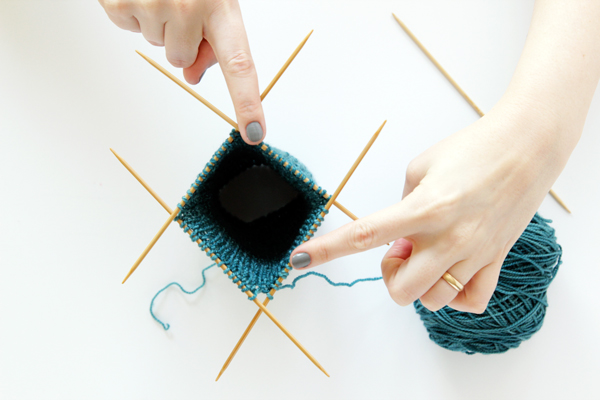
Here’s a good video showing how to distribute stitches on DPNs.
Knitting the flap itself
A lot of people like to straight up put half of their stitches onto a single needle for working the heel flap. Personally, I like to knit a few rows of my heel flap on two needles just till the heel flap starts hanging separately from the tube of the sock ankle. Since we’re working on double pointed needles (DPNs), I feel like it’s just a little easier on your poor tiny baby stitches to keep the extra needle in play for a bit. I know yarn, especially superwash sock yarn stretches and whatever, but it’s just a habit I got into that I really like.
Anyway! :) Row 1 of the heel flap starts with the wrong side (a.k.a. inside, purl side) facing you. Slip 1 stitch purlwise, then purl 1 stitch across, which means you’ll repeat sl 1, p1, sl 1, p1 all the way across the row. You should be working with an even number of stitches, so you’ll end on a p1.
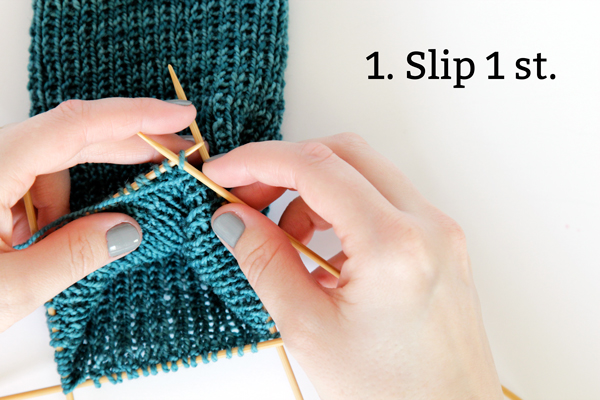
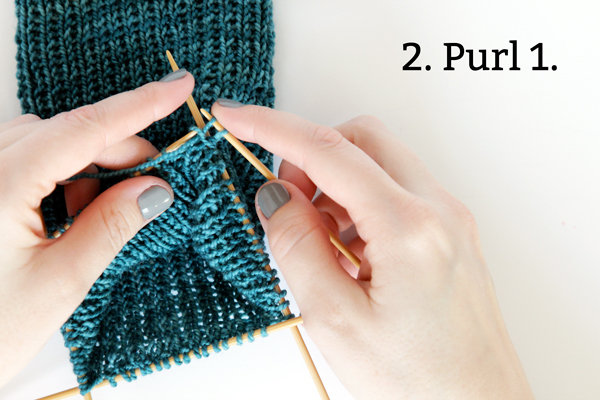
At the end of the row, flip your work to the other side (a.k.a. right side, outside, knitting side). For this side you’ll repeat slipping one stitch and knitting one stitch across, but you’ll be slipping as if to purl, despite being on the knit side.
A visual explanation of slipping as if to purl vs. slipping as if to knit.
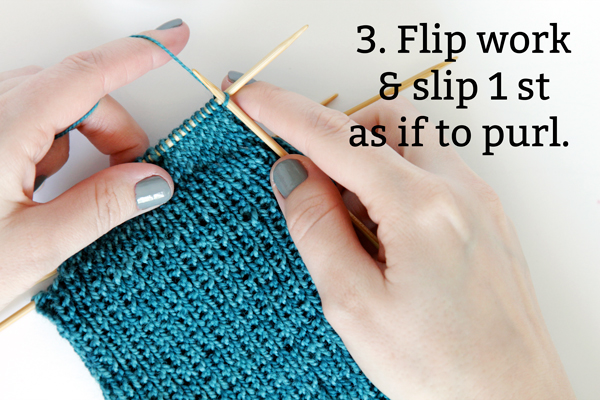
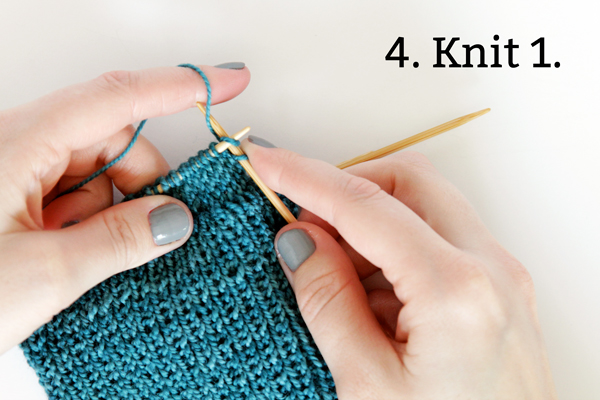
Note: All of the stitches you’re slipping on the knit side were purled on the purl side, and all of the stitches you’re knitting were slipped on the purl side. This staggering of slips and knits/purls creates a really dense and strong weave for your sock heel, which is the most-abused part of your finished sock. You want it to be as strong as it can be!
Knit your heel flap for 2.5 to 3 inches, depending on the size of the foot you’re knitting it for. I shoot for about 2.75 inches for my feet, but I’ve got high arches. If you want to check out a good thread filled with a variety of sock knitters’ insights on measuring the heel flap, I recommend this one.
The day 2 pattern
Heads up- for all of the pattern sections of my Knit Along posts, I’ll include all of the previous days’ sections of the pattern for reference.
Abbreviations
sl – slip
st – stitch
k – knit
p – purl
CO – cast on
WS – wrong side
RS – right side
CO 64 sts, join into a circle with DPNs and begin working a knit 1, purl 1 rib stitch all the way around. Continue working in k1 p1 until your sock is 7 inches from the cast on edge, or as long as you want the ankle to be on your leg.
The heel
Divide half of your stitches* onto 1 needle (or 2 if you like my method of starting on more to avoid stretching). Leave the other stitches on 1-2 needles, untouched.row 1. (WS) {sl 1, p1} across
row 2. {sl 1 as if to p, k1} across*If you’re working with 64 stitches, that means you’ll be working 32 sts.
—
Other posts in this knit along series
KAL announcement / KAL Day 1: Testing Gauge & Casting On / more coming soon!
Tune in next week Monday, April 28 for the next installment of the Knit Along – we’ll be turning our sock heels, which is (nerdily) kind of the coolest part of sock knitting. If you get stuck this week, please don’t hesitate at all to ask questions in the comments, I’m more than happy to help! You can also tag pictures of your in-progress socks with #handsoccupiedkal and join our Hands Occupied Knit Along Ravelry Group if you’re interested. Happy Knitting!
PS: If you want to grab the Knit Along badge for your site too, here’s the embed code.
<a href=”https://www.handsoccupied.com/knitalong”><img src=”https://www.handsoccupied.com/wp-content/uploads/2014/04/april2014kal.jpg”></a>
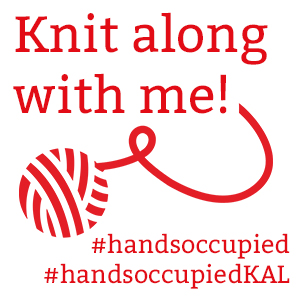
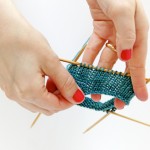
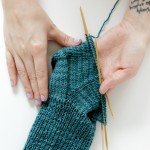
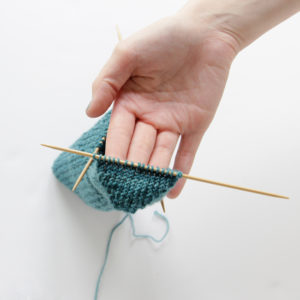
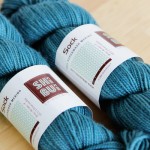






Thank you for such clear instructions and photos!
Thank you so much for the clear instructions! Will tune in later for the gusset tutorial.
Really clear instructions and explanations, so helpful with knitting my first pair of socks!